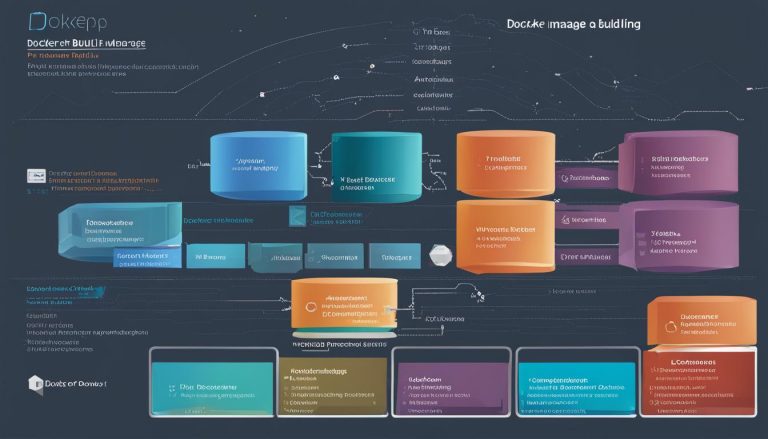Greetings! In this article, I will delve into the intriguing world of smart cities and explore their definition, characteristics, and the technology behind them. Join me on this journey to uncover the potential benefits and the future of smart cities.
But first, let’s start with the basics. What exactly is a smart city? A smart city is a municipality that leverages information and communication technologies (ICT) to enhance operational efficiency, share information with the public, and improve government services and citizen welfare. It’s all about using technology to create a connected, sustainable, and efficient urban environment.
Smart cities boast a technology-based infrastructure, proactive environmental initiatives, a well-integrated public transportation system, confident urban planning, and the ability to optimize resources for a harmonious living and working experience. These innovative cities rely on a combination of IoT devices, software solutions, user interfaces, and communication networks to collect and analyze data, leading to enhanced efficiency across various sectors.
Now that we have a glimpse of what smart cities are all about, let’s dive deeper into the fascinating world of smart city technology and how it plays a vital role in shaping the cities of the future.
Key Takeaways:
- A smart city harnesses information and communication technologies (ICT) to improve operational efficiency and enhance citizen welfare.
- Smart cities rely on IoT devices, software solutions, and communication networks to collect and analyze data for decision-making.
- Characteristics of smart cities include a technology-based infrastructure, environmental initiatives, and optimized resource utilization.
- The future of smart cities is promising, with a focus on sustainability, efficiency, and improved quality of life.
- Collaboration between the government and the private sector is crucial for the successful implementation of smart city projects.
The Role of Smart City Technology
In the realm of smart cities, technology plays a vital role in enabling efficient operations, improving citizen experiences, and enhancing sustainability. Smart city technology encompasses various elements, including IoT devices, data analytics, smart sensors, edge computing, and firewall security systems. These components work together to create a connected and intelligent urban environment.
At the core of smart city technology are IoT devices, which consist of interconnected sensors, devices, and infrastructure. These devices facilitate the collection and exchange of data, enabling real-time monitoring and analysis. Data analytics is another crucial aspect of smart city technology, as it allows for the extraction of valuable insights from the vast amounts of data generated by IoT devices. This analysis helps identify patterns, optimize processes, and make informed decisions to improve the overall efficiency of public and private sectors.
Smart sensors are instrumental in creating a data-driven ecosystem within smart cities. These sensors monitor various aspects of urban life, such as traffic patterns, air quality, waste management, and energy consumption. By collecting accurate and timely data, smart sensors enable city administrators to identify areas for improvement and implement targeted solutions. Edge computing, on the other hand, ensures that only relevant data is transmitted over the network, minimizing latency and enhancing response time.
Ensuring the security and integrity of data within a smart city network is crucial. Firewall security systems are employed to safeguard sensitive information and protect against cyber threats. These systems create a secure barrier that monitors and filters network traffic, preventing unauthorized access and malicious activities. With robust security measures in place, smart city technology can operate efficiently while maintaining the privacy of citizens.
Smart city technology finds various applications in urban environments. From smart streetlights that adjust lighting based on activity levels to smart grid technology that optimizes energy consumption, these technological advancements contribute to creating sustainable and resource-efficient cities. Environmental monitoring systems provide real-time data on air quality and pollution levels, enabling policymakers to implement measures that promote cleaner and healthier environments. Smart buildings equipped with structural health monitoring capabilities enhance safety and resilience in the face of natural disasters.
How Smart Cities Work
Smart cities employ a systematic approach to achieve their goals of improving the quality of life and optimizing operations. The process begins with smart data collection through a network of sensors strategically placed throughout the city. These sensors capture valuable information about various aspects of urban life, such as traffic flow, air quality, energy usage, waste management, and more. The collected data is then analyzed using advanced data analysis techniques to gain meaningful insights and identify areas for improvement.
Communication networks play a crucial role in smart cities, enabling the seamless transfer of data and insights to decision-makers. These networks ensure that relevant information reaches the right individuals, whether they are city officials, government agencies, or private sector partners. By leveraging real-time data and analytics, smart cities can make informed decisions and implement appropriate solutions to address urban challenges.
To optimize operations and improve the quality of life for residents, smart cities take action based on the insights gained from data analysis. This includes implementing smart city solutions such as intelligent traffic management systems, energy-efficient infrastructure, waste reduction programs, and improved public transportation networks. The goal is to create a sustainable and livable environment that prioritizes resource efficiency and enhances the well-being of the community.
In summary, smart cities work by harnessing the power of data collection, analysis, and communication networks to drive positive change. Through the optimization of operations and the continuous improvement of quality of life, these cities aim to create a sustainable and efficient urban environment for their residents. By leveraging smart city solutions, such as advanced technology and data-driven decision-making, cities can overcome urban challenges and pave the way for a brighter future.
Benefits of Smart Cities
Smart cities bring forth a multitude of benefits that positively impact both the environment and the lives of urban dwellers. With a focus on sustainability, these cities prioritize energy conservation and contribute to cleaner air quality by implementing efficient solutions. They optimize transportation systems, resulting in reduced traffic congestion and improved mobility for residents, leading to more efficient transportation routes and reducing greenhouse gas emissions.
Waste management is also a key area of focus in smart cities. Through innovative technologies such as recycling initiatives and advanced waste collection systems, these cities strive to minimize waste and promote a circular economy. By implementing intelligent waste management systems, smart cities can effectively reduce landfill usage and create a more environmentally friendly and sustainable waste disposal process.
“Smart cities provide enhanced public safety measures through various technological advancements. Surveillance systems and early warning systems for natural disasters help ensure the safety and security of citizens, allowing for prompt response and mitigation of potential risks.”
Furthermore, smart cities aim to improve the overall quality of life for their residents. By harnessing technology and data-driven insights, these cities provide efficient public services, enhance access to education and healthcare, and create sustainable living environments. The integration of smart technologies in various sectors allows for more personalized and tailored approaches, improving the overall well-being and satisfaction of urban dwellers.
| Benefits of Smart Cities | Description |
|---|---|
| Sustainability | Smart cities prioritize energy conservation and implement sustainable practices to minimize environmental impact. |
| Efficient Transportation | Optimized transportation systems reduce traffic congestion and improve mobility for residents. |
| Cleaner Air | Smart cities implement measures to reduce pollution and improve air quality, creating a healthier environment. |
| Waste Management | Innovative waste management systems promote recycling and minimize landfill usage, contributing to a circular economy. |
| Public Safety | Smart cities employ surveillance systems and early warning systems to ensure the safety and security of citizens. |
| Improved Quality of Life | Integrating smart technologies in various sectors enhances public services, education, healthcare, and overall well-being. |
Smart cities pave the way for a sustainable and technologically advanced future. By harnessing the power of data and technology, these cities create environments that are not only efficient but also prioritize the well-being and satisfaction of their residents.
Challenges of Implementing Smart Cities
Implementing smart cities comes with its fair share of challenges that need to be addressed for successful deployment and operation. These challenges range from data privacy concerns and cybersecurity threats to biases in AI predictions and the lack of interpretability in AI models. Additionally, changing legislation and policies related to data privacy and sharing pose hurdles to the seamless implementation of smart city initiatives. Economic improvements for the people and ensuring equitable AI decision-making are also vital considerations.
Concerns about Data Privacy and Cybersecurity
Data privacy is a significant concern in smart cities due to the vast amount of data collected and stored in various systems. It is crucial to establish robust data protection measures, secure storage, and encryption protocols to safeguard sensitive information. Additionally, cybersecurity threats such as hacking and unauthorized access pose risks to the integrity of smart city networks, requiring the implementation of advanced security measures and real-time monitoring to detect and mitigate potential attacks.
Biases in AI Predictions and Lack of Interpretability
Smart cities heavily rely on AI algorithms and machine learning to analyze data and make predictions. However, these algorithms may introduce biases that can lead to unfair or discriminatory outcomes, particularly in sensitive applications such as law enforcement or public services. It is essential to address these biases and ensure that AI systems are trained on diverse and unbiased datasets. Furthermore, the lack of interpretability in AI models can hinder trust and understanding, making it crucial to develop explainable AI methods that provide insights into how predictions are made.
Changing Legislation and Policies
The implementation of smart cities requires navigating through evolving legislation and policies surrounding data privacy, sharing, and ownership. As technology advances and new challenges emerge, policymakers need to continuously adapt the legal framework to protect citizens’ rights and ensure transparency in data collection and usage. This involves collaborating with stakeholders, including government agencies, legal experts, and technology providers, to develop clear and comprehensive guidelines that support the responsible development and operation of smart cities.
Economic Improvements and Equitable AI Decision-Making
While the benefits of smart cities are promising, it is essential to ensure that economic improvements are accessible to all residents. Inclusive growth should be a top priority, with considerations for affordability, job creation, and opportunities that benefit all socioeconomic groups. Additionally, AI decision-making must be fair and unbiased, addressing any potential discrimination and ensuring equitable outcomes for all communities. This requires continuous monitoring, evaluation, and adjustment of algorithms to prevent unintended consequences and promote social equality within smart cities.
| Challenges | Solutions |
|---|---|
| Data privacy and cybersecurity | Implement robust data protection measures and advanced security protocols |
| Biases in AI predictions and lack of interpretability | Address biases in AI algorithms and develop explainable AI methods |
| Changing legislation and policies | Collaborate with stakeholders to develop clear guidelines and adapt legal framework |
| Economic improvements and equitable AI decision-making | Ensure inclusive growth and fair outcomes through continuous monitoring and evaluation |
Successfully implementing smart cities requires overcoming these challenges through a collaborative effort involving government, citizens, technology providers, and policymakers. By addressing data privacy concerns, improving cybersecurity measures, and promoting transparent and equitable AI systems, smart cities can create sustainable, inclusive, and technologically advanced urban environments that benefit everyone.
Conclusion
Smart cities are the future of urban living, harnessing the power of advanced technologies and AI techniques to manage resources efficiently, improve quality of life, and address the environmental and social challenges of rapid urbanization. The field of data science plays a vital role in gathering and analyzing data from various sensors, providing valuable insights to city managers for informed decision-making.
With the potential to revolutionize the way we live, work, and interact with our urban surroundings, smart cities offer immense benefits. By leveraging AI techniques and data science, these cities pave the way for sustainable, livable, and efficient urban environments. The focus on privacy, security, and inclusivity is crucial for the continued advancement and success of smart cities.
As we continue to witness technological advancements, the potential for smart cities to shape our future is promising. By embracing urbanization, sustainability, and AI techniques, these cities have the power to create a positive impact on our lives and the environment. The journey towards smarter and more connected cities is an ongoing one, and it is our responsibility to ensure that these advancements are implemented ethically and with the well-being of citizens at the forefront.
FAQ
What is a smart city?
A smart city is a municipality that utilizes information and communication technologies (ICT) to enhance operational efficiency, share information with the public, and improve the quality of government services and citizen welfare.
What are the characteristics of a smart city?
The characteristics of a smart city include a technology-based infrastructure, environmental initiatives, a high-functioning public transportation system, confident urban planning, and the ability to live and work within the city using its resources.
What technologies are used in smart cities?
Smart cities rely on a combination of IoT devices, software solutions, user interfaces, and communication networks to analyze data and improve efficiency in public and private sectors. These technologies include connected vehicles, sensors, data analytics, smart streetlights, smart grid technology, environmental monitoring systems, and public safety measures.
How do smart cities work?
Smart cities follow a four-step process that involves collecting data through smart sensors, analyzing the data to gain meaningful insights, communicating the insights through strong communication networks, and taking action based on the insights to optimize operations and improve the quality of life for residents.
What are the benefits of smart cities?
Smart cities offer benefits such as improved sustainability, optimized transportation systems, enhanced waste management, improved public safety, efficient public services, and an overall improved quality of life for residents.
What challenges are faced in implementing smart cities?
Challenges in implementing smart cities include concerns about data privacy and cybersecurity, biases in AI predictions, lack of interpretability in AI models, changing legislation and policies, and ensuring economic improvements and equitable AI decision-making.
What is the future of smart cities?
Smart cities represent the future of urban living, utilizing advanced technologies and AI techniques to manage resources efficiently, improve quality of life, and mitigate environmental and social impacts of rapid urbanization.
Jana is a public relations specialist and writes about all kinds of software products that make our life easier.


